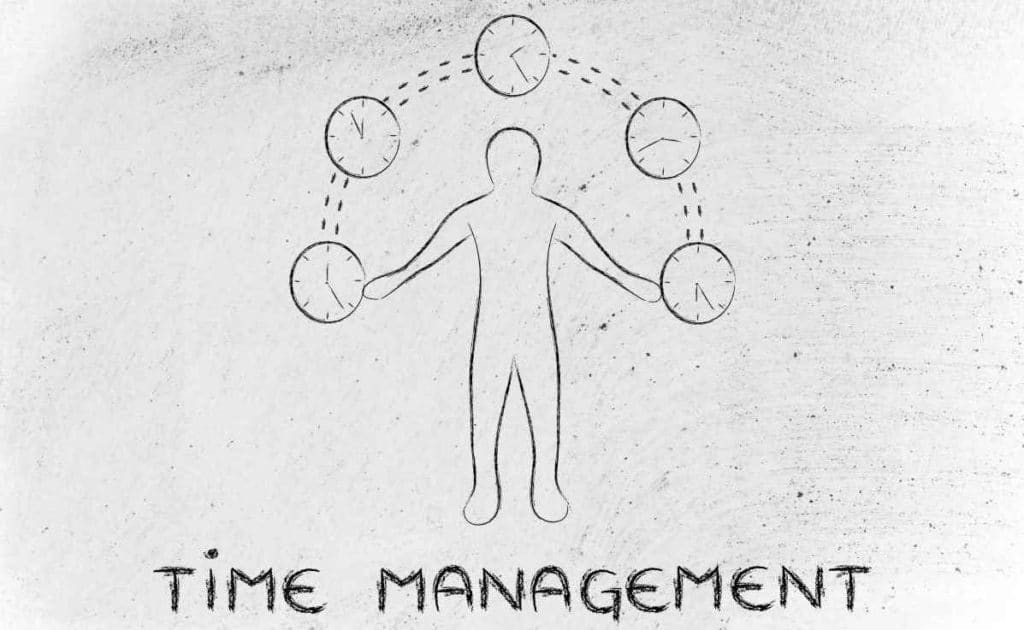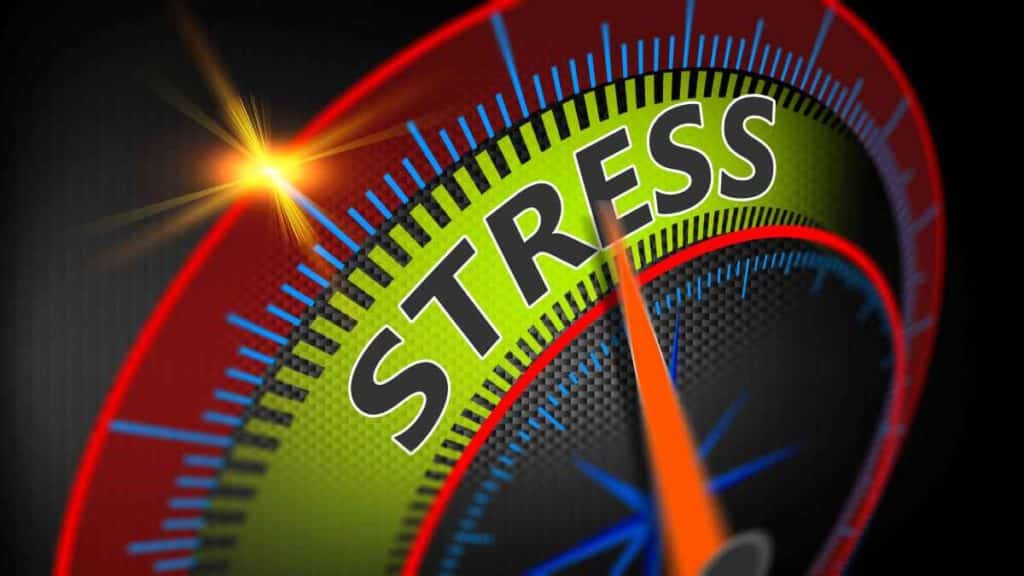Just like many other PT applicants or individuals often wonder, I too used to wonder if PT school was hard. If it was, what were the unique demands that made it so? Was it hard for multiple reasons or just one? Was any of it avoidable or simply an inevitable aspect of what one signs up for when applying and getting into PT school? PT school can indeed be hard, but for a number of potentially different reasons. The key is to know why and how it could be hard for YOU.
Thankfully, I’ve gone through it all and am passionate about sharing all of my personal insight (and factual insight, whenever possible). This article will cover a lot of information, as my intention is to help you out with this as much as possible.
The quick answer as to whether or not physical therapy school is hard and the potential factors that can make it hard.
The quick answer: It depends. Some students never have a single issue, some struggle all the way through, and everyone else falls somewhere in between those two extremes.What you need to know is WHY PT school may be hard for YOU. If a student is going to have a hard time with PT school, the reason(s) as to why can usually be categorized into one or more of the following categories:
- The academic material
- The academic course load & pace
- Time management skills
- The clinical applications of the material
- Financial stress of the program
- External factors to the program
Some students never have a single problem at all. Others struggle to keep their heads above water from day one. Everyone else falls anywhere in between on that spectrum.
The key is to understand WHY. That’s exactly what I will elaborate one throughout the rest of this article.
Article overview
- Defining and unpacking the definition of “hard”
- Issue 1: Academic material & being deficient in prerequisite knowledge at the start of the program
- Issue 2: The volume of material and the pace at which it moves
- Issue 3: You are expected to maintain good grades in PT school with minimal margin for error
- Issue 4: Time management skills (sometimes students make it hard on themselves)
- Issue 5: Knowledge and application of knowledge are two very different things
- Issue 6: Financial stress of school (school ain’t cheap, and financial stress is real)
- Issue 7: Life outside of school doesn’t stop simply because you’re taking a bunch of courses
Defining and unpacking the definition of “hard” in PT school
There’s a lot to unpack when we discuss the potential of PT school being “hard”. For starters, each person may have a different interpretation or expectation of what “hard” is when it comes to any and all aspects of school.
For simplicity’s sake, let’s just consider “hard” to be an individualized, personal sensation at which the student perceives the high level of effort they’re giving to be unfavourably disproportionate to the results they are obtaining.
An example would be perceiving that the student always studies extensively for their exams but always or most always receives grades below class average or below the school’s acceptable standards.
Another example could be simply that the student feels that they are being as effective with their time management as possible (and doesn’t know how to possibly optimize it any further) and yet still feels like there is not enough time in the day or week to study or get assignments completed on time.
The examples are endless, but hopefully this serves as a quick baseline as to perhaps what we may consider to be “hard”. Above all else, just remember that there can be a wide range in terms of what one student to the next perceives the context of “hard” to be. Ultimately, “hard” is whatever you perceive it to be. So just keep that in mind as we now turn our attention to the key issues that often give students a hard time in PT school.
Issue 1: Academic material & being deficient in prerequisite knowledge at the start of the program

When most students think of school (PT or otherwise) being hard, they oftentimes think about it from the standpoint of material/curricular complexity, such as learning challenging concepts and breaking it down into a way that is easy to both understand as well as memorize.
There are indeed some tough courses in PT school, or at least ones that are tougher than others. I would venture to say that every PT student has at least one course that they find to be rather challenging in terms of either material complexity or material volume. The two heavy-hitters tend to be gross anatomy and neuroscience. It’s not to say that they’re the only ones, but they have a reputation for a reason.
I’ve written a blog post discussing what makes these courses so challenging as well as the specific type of material that is covered for each of the two courses. Click here to read the article on What are the Hardest Courses for Students in PT School?
Deficiencies in prerequisite knowledge will make PT school much more challenging for you
One of the issues that makes these particular courses (but any other course as well) hard for students is that often times the student’s knowledge isn’t quite up to speed with knowing some prerequisite material regarding the human body.
While a student is of course not supposed to know everything about a given subject, having a strong grasp on basic human anatomy, basic physiology and so on can really make a difference as to whether or not a student finds PT school to be hard.
This usually becomes an issue for the student since they now have to go back and try to strengthen their basic knowledge at the same time that the next-level material is being presented. This can wreak havoc on a student as they find themselves quickly falling behind and/or scoring low on exams.
Staying caught up on learning new material is oftentimes tricky enough. Having to go back and learn more rudimentary material just so you can then learn the new material can be a nightmare.
To rectify this issue, a PT applicant or student who has yet to start their program would be wise to spend their time reviewing all of the basics pertaining to the human body. The goal is not to master the material at this stage, but rather to brush up on and strengthen conceptual knowledge. This would include topics such as basic human anatomy and physiology, basic exercise science and basic health & wellness concepts.
The bottom line: PT school can indeed be a challenge strictly from the complexity of material that students are expected to learn. If a student can have a strong foundational knowledge-base of the human body in place before beginning their PT program, it will alleviate a fair degree of perceived exertion when it comes to understanding new material and staying caught up on it throughout the process.
Issue 2: The volume of material and the pace at which PT school moves can challenge nearly every PT student

While plenty of students face challenges with understanding and applying various concepts and material taught in PT school (see Issue 1), other students have more of a challenge with the volume of material and the pace at which it moves as opposed to the complexity of the material. Some students have issues with both, which is the last spot you want to find yourself in as a PT student
Here’s a quick analogy of what I mean: It may not be hard to do 25 jumping jacks all by themselves. Or it may not be too challenging to do 5 pushups without having to do anything else. Same with maybe sprinting for 40 meters. But, all of them become more challenging to do (or do well) when you have to do all of them right after the other. And just when you complete them, you have a new batch of exercises you now need to do.
This is analogous to how a lot of PT students feel when it comes to their course work for any given semester. It’s not that the complexity of material is the issue, it’s that every day there may be an assignment due or a quiz, or an exam, etc. Assignments can take time to complete and brushing up for a quiz or exam can take time as well.
Even diligent students can at times find themselves struggling to keep pace with everything required of them throughout all of their courses week after week. What this results in can be a cumulative effect of academic challenge. And with no time to stop and catch your breath, so to speak, a sixteen week semester with four or five courses can feel like some sort of grueling obstacle course that hits you from every angle possible.
Courses with the highest volume of material
Some courses in PT school are notorious for high volumes of material. The most notorious are gross anatomy and clinical neuroscience. As mentioned above, I’ve written a blog post discussing what makes these courses so challenging as well as the specific type of material that is covered for each of the two courses. If you’d like to learn more about this topic, go read the article on What are the Hardest Courses for Students in PT School?
Cardiopulmonary PT is another course filled with a higher degree of material that is covered within a single course. Again, by itself it may not be so bad, but when taking it in conjunction with a few other courses during a semester, it can begin to become a bit more demanding.
Courses with conceptually challenging material
While some courses (such as gross anatomy) aren’t necessarily challenging from complexity of material (gross anatomy is challenging strictly from the volume of material for most students), other courses can be challenging from conceptual standpoints.
While this is a bit more arbitrary or anecdotal in terms of which courses these may be (since every student is different), courses such as a functional anatomy course or a biomechanics course can serve as good examples.
These courses can present concepts such as arthokinematic principles of joints (roll and glide motions) within the body, analysis of ground reaction forces, etc.) and oftentimes give students a headache as a result. Some students thrive on this material, but others don’t. Again, everyone is different and it’s important for you to be aware of this.
The bottom line: Just because you don’t have much of an issue with the complexity of the academic material of PT school doesn’t mean you’re entirely out of the woods just yet. PT school will throw a lot of material at you at very fast rates, and you’ll be busy with one assignment after another, one quiz after another and one written or practical exam after another. PT school can move fast and staying caught up can be challenging even if you’re good with the learning material itself.
Issue 3: PT students are expected to maintain good grades throughout their program with minimal academic margin for error

The issue of maintaining adequate course grades is oftentimes what lands students in serious trouble. As a result, it is oftentimes a big, continual stressor all throughout PT school. Again, every student is different in terms of how easy it is for them to achieve satisfactory grades, but the academic standards are the same for everyone.
While every school may institute slightly different requirements, most schools require the student to maintain a letter grade average of “B” (83%) or above for each course that they take.
Many schools within the US have a “three strikes and you’re out” policy in which a student is only permitted two final course grades of a “B-“ throughout the entire program. A third final course grade of B- or below results in the student either decelerating in the program (having to wait until next year to proceed and retaking at least one of those courses in the process) or dismissal from the program.
This policy has been widely adopted since the statistics are pretty clear that students who struggle to maintain an overall average of above 83% tend to have a very difficult time passing the NPTE.
In drawing upon the above paragraph, it helps if we analyze this from the standpoint of the school: The school wants to be able to report high graduation and high board exam passing rates. This is largely because schools are mandated to publish these rates every single year.
So, if a student is struggling in the program and the odds are high that they won’t be able to pass the exam, the school will take appropriate measures to either have the student re-take coursework or be dismissed entirely from the program.
What this does is helps the school ensure that they have higher graduation rates and board exam passing rates (which they need to publish every year). It may sound harsh, but from the school’s standpoint it makes sense. They know that it won’t reflect good on the institution to have to publish graduation rates and passing rates that are lower than other PT schools. Bad for business, so to speak.
Anecdotally, I can say that the students in my PT cohort who struggled to stay in the program from an academic grade standpoint indeed tended to have a rather difficult time passing the board exam. Most (if not all of them) had to take the board exam twice and there are three that I know for sure that had to take it three times before passing.
What this all equates to for the PT student is the sensation of oftentimes walking a tightrope in terms of pressure to not slip up academically. School gets a bit more stressful and challenging when you’re one slip and fall away from decelerating or being booted from the program entirely.
The bottom line: There’s not a ton of room in PT school for repeated error when it comes to academic performance. There are academic minimums that the student must always stay above throughout the program, which helps to ensure that the student will indeed be capable of passing the NPTE board exam for their licensure. Some students never have an issue with grades, while others fight for dear life all throughout the program.
Issue 4: PT school can be a rough ride if your time management skills are not on point

It should go without saying that PT students tend to stay really busy due to their full-time courseload that they endure throughout their entire program. Credit load can be easily in the high teens every semester, sometimes even higher than that. To compound the situation, multiple hours every single week are often taken up with the laboratory-based components of courses, with most labs being three hours in length.
On top of the high number of weekly hours spent in lecture halls, classrooms and labs, students stay very busy with assignments, projects and the continual need to study for written quizzes and exams as well as practical (lab-based) quizzes and exams.
This means that students had better be on-point when it comes to budgeting their time accordingly. If you want to have more free time throughout the week, then that’s fine, but oftentimes means you’ll have to sacrifice study time.
Students who have great academic performance in their classes will still stay busy with assignments and papers, so hardly anyone is immune to the busyness and the subsequent need for great time management skills.
This is where students can oftentimes make life harder on themselves
It can take a high degree of discipline to go weeks on end with minimal free time or leisure time. Students are wise to schedule it into their weekly regimen, but need to realize that it won’t be nearly as frequent or high volume as they’d perhaps like it to be.
If you’re not good with your time management skills, don’t blame your academic struggles on PT school itself. That’s like not knowing how to drive a car, but you try anyways, crash it and then blame the car.
Yes, you can have the best time-management skills in the world and still have a challenging time with your courses, but the challenge is then from the material and not from you being unable to devote adequate time to studying or being unable to turn assignments in on time, etc.
I won’t get into the details of “time management” within this article, but for the sake of keeping things short and simple, time management simply refers to the active process of creating effective schedules, implementing them and then sticking to those systems. These are individualized systems that permit you to maximize your time spent on studying with little wasted time or downtime in between.
The bottom line: Signing up for PT school means you’re accepting that you’re going to be keeping yourself busy for a few years. If you’re not the strongest academic and you’re wanting to have lots of leisure time while in PT school, you may be setting yourself up for failure. School doesn’t last forever, and if you play your cards right, you can set up a great career that affords you more free time further on down the road. It just may be a big mistake to think you can take that road while actually in PT school.
Issue 5: Knowledge and application of knowledge are two very different things when it comes to success within PT school

To a very large extent, half of PT school is learning about material and the other half is all about effectively applying it. This is essentially what the profession of being a physical therapists is all about.
A large majority of didactic coursework in PT school carries laboratory-based coursework in addition to lecture-based coursework. The laboratory courses are where you take all the raw knowledge and material that you acquire within the lecture component and now apply it in real-world scenarios.
This often involves selecting the appropriate course of action to take for a situation or patient and then providing the right steps, procedures and techniques to carry out or provide an effective intervention.
Students can really struggle with this at times. Knowing a bunch of key features of a topic is one thing, but being able to select the most appropriate ways to go about treating or intervening on it is another. This can cause some struggles for students who have more of an “academic” or “classroom-based” mindset.
Factual, classroom material can oftentimes be pretty black and white. Laboratory material consisting of treatment and intervention can be much more grey at times, and just because you know how to perform a particular treatment intervention doesn’t necessarily mean it’s the right one or best one to use.
To further the challenge, students may indeed know the best treatment method to select, but their ability to execute it in a safe and effective manner may not be adequate.
What this means is that knowing material is not enough; a student must be able to critically analyze the best option for the particular situation and must then be able to apply it and do so in safe and effective manners.
There were dozens and dozens of times within PT school where I saw classmates do well on written exams but then really struggle with laboratory examinations. Lab exams can indeed be a bit nerve racking when it comes to having your professors watch and analyze every intervention you select and perform, and this oftentimes got the better of some of our classmates.
The bottom line: To succeed in PT school you will need to have strong academic skills as well as strong practical, hands-on skills. These practical skills not only require you to draw upon raw knowledge, but to then critically think and apply it in physical ways. You need to demonstrate that you understand the material AND that you have the ability to provide the appropriate hands-on techniques throughout the process. This takes practice and can be a struggle for students who are more of a strictly academic mindset.
Issue 6: The financial stress of PT school can be a nightmare (school ain’t cheap and financial stress is real)

The issue of finances making PT school hard is kind of in its own category. This is largely due to the fact that finances, loans, etc. make school challenging in more of a secondary or indirect aspect than a primary or direct aspect. Sometimes students have to withdraw from their program simply due to the financial requirements of school rather than from academic requirements.
It’s also worth quickly mentioning that this is the area that I personally struggled with the most while in PT school. The academic portion of school kept me busy, but I never struggled or stressed much in regards to the coursework material or volume.
It was the financial side of things in terms of where I had a hard time. For me, loans were stressful among other things. Aside from needing exorbitant amounts of money just to cover tuition every semester, I also had to take out loans for rent and food and all that other fun stuff.
Working a job while in PT school
Many students have no real option but to hold down part time or even full time job hours outside of PT school, regardless of it being what the school advises against. Is working a job outside of PT school impossible? No. But it can indeed make life a lot more challenging for your academics. I worked a bit to get a bit of income, but it was a small drop in the bucket compared to what I needed every month and every semester.
While the scope of this article does not discuss whether or not you should work a job or not while in PT school, just know that many students do. Some can manage it quite well, while others do so at the expense of their studies and subsequent course grades. Regardless, holding down a job outside of PT school creates a new realm of challenge that can indirectly make school that much more challenging.
The bottom line: What’s important to understand with all of this is that the issue of finances can really make PT school challenging or stressful for students. Sometimes students struggle academically, but only (or largely) due to the fact they volitionally sacrifice much of their study time in the name of earning income in order to pay rent.
The school may tell students not to work a job while in the program, but it’s not much of an option for many students. Whether you choose to work or not while in PT school, just know that issues revolving around money have an uncanny way of making PT school just that much more challenging.
Issue 7: Life outside of school doesn’t stop simply because you’re enrolled in PT school

Piggybacking off of issues of personal finances, another indirect challenge of PT school that students can be presented with is any life situation outside of school.
Just because you’ve signed up for PT school doesn’t mean in any sort of way that life will put itself on hold for you until you’re graduated. Life doesn’t care whether you’re not in school or whether you’re in the most demanding semester of the program. Challenges and issues still arise outside of school that will cause stress, interfere with your time and ability to study, or perhaps attend classes and much more.
When your time, attention and energy must be diverted from school and put towards other means, the result is higher amounts of stress and less focus on your coursework and studies. This typically presents a challenge in all sorts of ways for these students.
Family issues can arise, personal or romantic relationships can demand attention, unexpected financial situations can occur, sickness or illness may come about and many other such factors can arise. Each of these example scenarios can occur to anyone at any point in time while in school. Sometimes they are minor and can be dealt with quickly and effectively, while other times they can be ongoing, continual sources of stress throughout the program.
The bottom line: Not one single student is immune to the challenges and situations life will present them with outside of PT school. A student who would otherwise find PT school to be a walk in the park can instead struggle through portions (or even the entire program) due to the unique life circumstances and/or challenges that they are trying to take care of outside of school. Some students may only face minor inconveniences while others will have to deal with major issues.
It’s therefore important to be aware of the potential for life to make PT school more challenging, whether you want it to or not. It’s tough to breeze through school when the time you need to spend on assignments or studying is instead spent on dealing with other life situations. A lot can happen in life over a three-year span, which is the length of time it will take you to get through the DPT curriculum.
Concluding remarks
Students, their academic background, their personal drive and their life circumstances all vary greatly from one to the next. For these reasons (among many others), some don’t consider PT school to be an overly hard or stressful experience while others struggle heavily. Some don’t make it through the program. For most students, they will find themselves somewhere in between on the spectrum of “no challenge at all” to “impossible to get through”.
What’s important for YOU to understand are the reasons WHY it can be challenging for students. There is simply more than one reason and most of these reasons can be grouped into a few specific categories, either directly from the program itself (material complexity or volume, etc.) or to other indirect categories that can make PT school more challenging (such as financial challenges or other personal challenges outside of school that must be dealt with).
Once you are familiar with these key areas that can make PT school hard, ask yourself if you can see yourself falling into any of these categories. Taking time and reflecting on how you can prepare yourself to avoid such areas or minimize the struggle is a wise move to make, and one that’s better done before beginning your program rather than when half-way through.
The bottom line: PT school is very doable. Work hard, take it seriously, make the appropriate sacrifices along the way and remember that it won’t last forever.
Grind hard. You got this.

Hi! I’m Jim Wittstrom, PT, DPT, CSCS, Pn1.
I am a physical therapist who is passionate about all things pertaining to strength & conditioning, human movement, injury prevention and rehabilitation. I created StrengthResurgence.com in order to help others become stronger and healthier. I also love helping aspiring students and therapists fulfill their dreams of becoming successful in school and within their clinical PT practice. Thanks for checking out my site!

